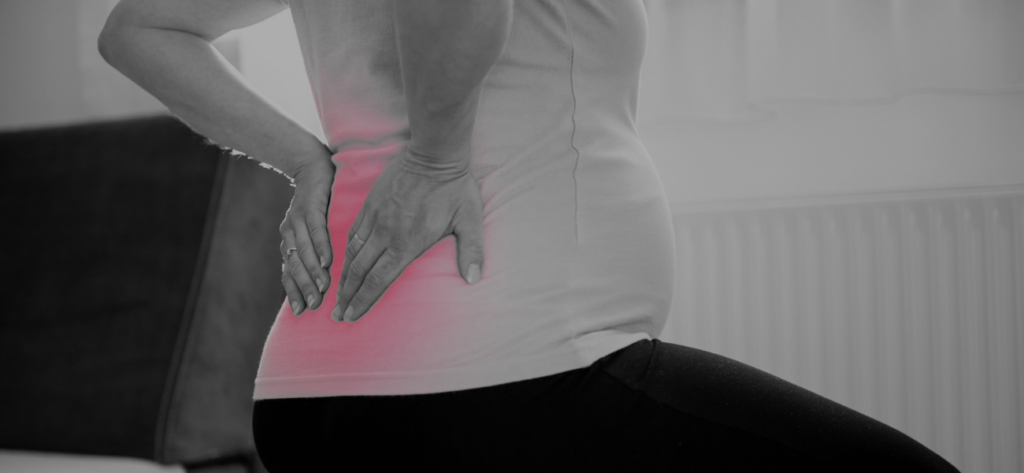Pregnancy and child rearing are obviously difficult endeavors physically for the mother involved. The addition of lower back pain can make the process even more challenging, and may ultimately affect both members of the parenting team. This article discusses mechanical changes that take place during this process, and ways in which lower back pain can be prevented or alleviated.

Hormonal Changes
The process of giving birth requires a significant hormonal transformation. One specific process is that of creating a more flexible pelvis to allow enlargement of the birth canal. Unfortunately the hormone Relaxin is not region specific, but acts throughout the entire skeletal system, creating a relative instability which is often noted in the lower lumbar spine. After the child is born, this process doesn’t immediately reverse itself; it takes from 6-12 months to reestablish the normal joint integrity. Thus protecting joints from patterns of overuse, especially those that are weight bearing, is important for a prolonged period. A persisting, dull ache in the lower back during the months following delivery is a characteristic symptom of this type of problem.
As the pregnancy continues, the added weight about the lower abdomen tends to tip the pelvis forward and increase the curve (lordosis) in the lower back. Due to the relative instability of the lower lumbar spine, joint surfaces tend to impact to a greater degree, at times trapping fragments of an early degenerative disc. Due to the ongoing and increasing load, muscle fatigue in the lower abdominals and back is more prevalent. One’s body weight obviously ahs to be supported somehow and the load ends up being supported by bony/joint structure (spine/hips/knees), increasing the possibility for pain and if not corrected early degenerative change.
If symptoms are present in the lower back, use ice for local pain and inflammation relief. Apply for 10-15 minutes as necessary. Making postural changes can also help diminish the impingement that occurs in the lower spine. When standing for a prolonged period, place a foot on a step stool or similar elevated object. This will flatten the pelvis and more evenly distribute the load to the lower back. This is also advisable when rocking or holding a child in arms while standing for prolonged periods (dad, keep this in mind too). If involved in repetitive rotation activities with the child or other heavy object in arms, rotate while standing on one foot. The twisting will occur about the hip and not the back.
Preventative Measures
There are a number of preventive measures that can also be taken. Foremost, prepare for the body changes that will occur during pregnancy. A strong lower torso (abdominals, lower back and buttock musculature) and pelvic floor can significantly diminish the predestination to lower back or incontinence problems. Sufficient strength gains require a diligent effort over many months, so prepare ahead.
Creating a home environment that is posturally and mechanically sound is also quite beneficial. Utilizing furniture (crib, changing tables, etc.) that minimizes the amount of forward bending required by the parent is advised. The crib mattress height is probably the most crucial, purchase a crib that allows for adjustable mattress positioning. Placing most commonly used items at or around waist height will also prevent excessive forward bending. For example, place frequently used clothing or supplies in the top drawer of the changing table. Moving children in and out of the car and car seat is also a potentially traumatic scenario. If there are plans to buy a new vehicle, bring the car seat along to determine the ease at which these tasks can be accomplished. As a general rule, do your best to maintain your trunk in a an upright position at all times, bending at the hips while maintaining objects (baby, car seat, etc.) as close to your body as possible.
- Staying Fit While Aging - July 3, 2023
- How Much Exercise do You Need to Stay Healthy? - September 21, 2022
- Even a Small Amount of Exercise can Have Huge Benefits for Our Bodies - March 16, 2022
